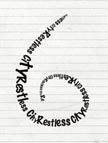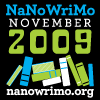 What reading device will my great-grandchildren be using in a hundred years? Will they still read books — you know, the ink on paper kind? Maybe a Kindle 23.5? Probably not. Whatever it will be hasn’t been invented yet.
What reading device will my great-grandchildren be using in a hundred years? Will they still read books — you know, the ink on paper kind? Maybe a Kindle 23.5? Probably not. Whatever it will be hasn’t been invented yet.
But what of the documents, books, letters, family histories — to say nothing of photos — that exist solely in digital form on zip drives, thumb drives, hard drives. servers and such? Will those survive? Who will “move them forward” to each new generation of storage and viewing devices? How many of you have manuscripts, journals, stories and important documents saved to 5.25, and 3.5 inch “floppies” or residing on old computers that won’t boot up any more?
Last week, the Clark County commissioners presented their chosen memorabilia to be placed in a time capsule to be unearthed 100 years from now in 2109 –- the county’s bicentennial. The collection includes newspaper clippings, photos, DVDs, and books. I was honored that two of our Stephens Press titles have thus been preserved as future relics: Education in the Neon Shadow: The First 50 Years of the Clark County School District and Springs in the Desert: A Kid’s History of Las Vegas.

I was pleased, too, that this preservation for future generations is in book form. When the time capsule is opened, they’ll be able to immediately turn the pages and read the text. Meanwhile, the DVDs that were included may leave historians a bit befuddled as they figure out how to view them — maybe the descendents still starring on the reality TV show Pawn Stars will have a working DVD player somewhere in a back room.
For our books, we won’t be concerned. If time has proven anything it is that words on paper have endured for thousands of years. Reporters at the time capsule event were told that today’s news stories regarding the capsule would be included. As such LVRJ reporter, Scott Wyland, sent in his article this humorous message to future readers: “If it’s 2019 and you’re reading this, kudos if Lake Mead hasn’t dried up, the Strip is powered by the earth’s magnetic waves and you’ve found a way to travel between here and LA in 20 minutes. And oh, this is what a newspaper used to look like.”
In 2005, when we published Springs in the Desert, we invited the children of Clark County to predict the future. I’ll leave you with a few optimistic and perhaps telling predictions. And to Chris, Mitch, MacKenzie, Gaby, Serretta, Matteo, Mai Lyn, Kristen, Alyssa, Daniel, James, Michael, Trevor, Karina, Anthony, Samatha, Kenyada, Jose, Tara, Jesse, James, and Cass — your words, too, have been preserved for the future.
“Famous scientists will make a collar that can fit any animal. The collar has a big knob on it that you can spin, and then the animal can speak human languages.” — Jesse
“There will be no business in the future. Scientists will come up with gadgets that can give you everything you want, so there will be no need to spend all your time at work getting paid so little.”
– MacKenzie
“Las Vegas will become the capital of the United States, since it will be the center of attention for the world. The President will even want to move the White House to Las Vegas.”
– Jose
“To save more space and to attract more tourists, there will be hotels that float in the sky. There will also be a few lower hotels for people who are afraid of heights.”
– Alyssa
“Everyone will have a robot that goes to school for them while you stay home. Then, when school is over, it transports everything it learned into your brain.”
– Daniel
Note: Springs in the Desert (and the accompanying activities guide) can be found at www.kidshistoryoflasvegas.com and Education in the Neon Shadow is at www.educationintheneonshadow.com.


 “How do I protect my work?” is a question that comes up at every conference and the writers groups where I speak. Having one’s manuscript stolen seems to be a huge concern among new writers. Many would-be authors, upon having an editor or agent ask for a manuscript to be sent to them, go into spasms of anxiety that their 100,000 hard-won words will be swiped and sold to a publisher under someone else’s name.
“How do I protect my work?” is a question that comes up at every conference and the writers groups where I speak. Having one’s manuscript stolen seems to be a huge concern among new writers. Many would-be authors, upon having an editor or agent ask for a manuscript to be sent to them, go into spasms of anxiety that their 100,000 hard-won words will be swiped and sold to a publisher under someone else’s name. What happens when a parent’s perfectly normal day turns into every parent’s worst nightmare?
What happens when a parent’s perfectly normal day turns into every parent’s worst nightmare? Vu Tran, the seventh author in our Restless City serial novel, has won a 2009 Whiting Award. With the literary prestige comes a check for a cool $50,000. The Mrs. Giles Whiting Foundation named ten recipients of the 2009 Whiting Writers’ Awards. The awards have been given annually since 1985 to writers of exceptional talent and promise in early career. The short stories of Vu Tran have appeared in such journals as the Harvard Review, Southern Review, Glimmer Train, and the Antioch Review and have been selected for inclusion in the 2007 O. Henry Prize Stories, Best American Mystery Stories 2009, The Best of Fence: The First Nine Years, and Las Vegas Noir. Born in Viet Nam and a refugee at the age of five, he and his family were relocated to Oklahoma where he grew up and earned a BA and MA from the University of Tulsa. Mr. Tran also has an MFA from the Iowa Writers’ Workshop and a PhD as a Glenn Schaeffer Fellow at the University of Nevada, Las Vegas. He writes often of Vietnamese and Vietnamese-Americans and of the immigration experience. Mr. Tran’s first novel is forthcoming from W.W. Norton. He currently teaches at the University of Nevada, Las Vegas and also works as a free-lance editor.
Vu Tran, the seventh author in our Restless City serial novel, has won a 2009 Whiting Award. With the literary prestige comes a check for a cool $50,000. The Mrs. Giles Whiting Foundation named ten recipients of the 2009 Whiting Writers’ Awards. The awards have been given annually since 1985 to writers of exceptional talent and promise in early career. The short stories of Vu Tran have appeared in such journals as the Harvard Review, Southern Review, Glimmer Train, and the Antioch Review and have been selected for inclusion in the 2007 O. Henry Prize Stories, Best American Mystery Stories 2009, The Best of Fence: The First Nine Years, and Las Vegas Noir. Born in Viet Nam and a refugee at the age of five, he and his family were relocated to Oklahoma where he grew up and earned a BA and MA from the University of Tulsa. Mr. Tran also has an MFA from the Iowa Writers’ Workshop and a PhD as a Glenn Schaeffer Fellow at the University of Nevada, Las Vegas. He writes often of Vietnamese and Vietnamese-Americans and of the immigration experience. Mr. Tran’s first novel is forthcoming from W.W. Norton. He currently teaches at the University of Nevada, Las Vegas and also works as a free-lance editor.






Recent Comments